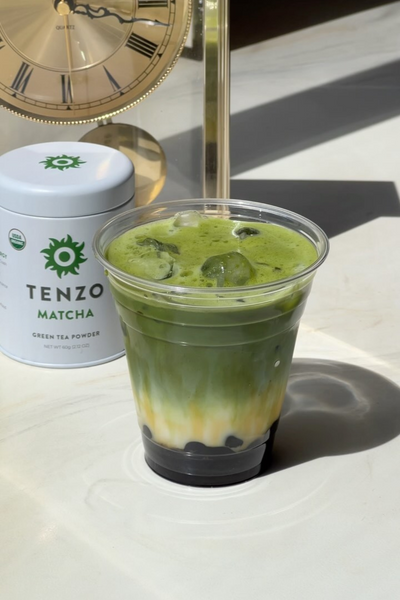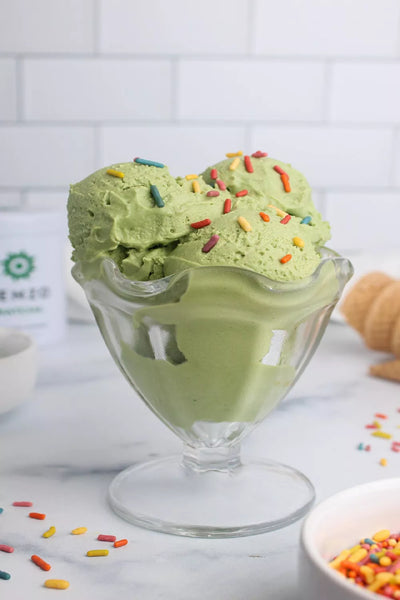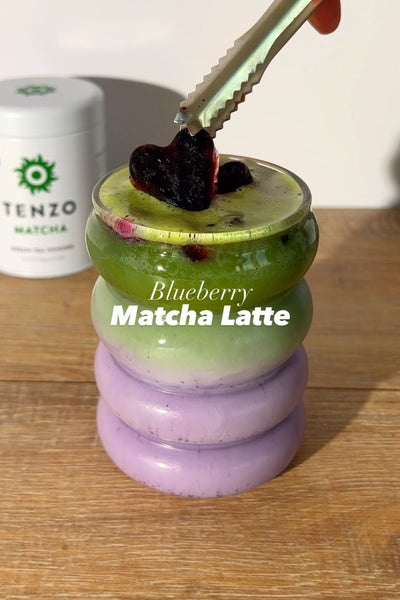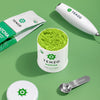How to Make Matcha Tea Without a Whisk: Different Methods

If you’re on the search for a low-impact, long-lasting alternative to your morning cup of coffee, then matcha might just be the way to go. It provides all the great energy boost of your morning coffee but without many of the side effects like caffeine crashes and headaches, and comes with many other health benefits like an improved immune system, promoted oral health, and even support for overall emotional health.
With all these benefits of matcha, it’s a good thing that matcha can be made right in the comfort of your home with just a few simple tools. And Tenzo Tea is here to help.
We make it easy to find the ingredients and recipes you need to make your morning cup of matcha tea or to enjoy a tea before bed, and we’re here to share the best way to create your matcha without a whisk. Check out this matcha-making guide to get started.
What is Matcha?
Matcha is a type of green tea that comes from the camellia sinensis plant and is harvested when it is young. Unlike traditional teas, which are prepared via the steeping method, matcha tea is ground into a fine powder and then mixed directly into the hot water or other ingredients.
This ensures that your matcha tea maintains more of its essential nutrients and antioxidants that make it such a great choice for your overall health and wellness.
And there are a lot of benefits to regularly drinking matcha. Matcha is such an excellent substitute for coffee and other caffeinated drinks that it’s even recommended for the nighttime routine. The effects of matcha can last as long as ten hours and you’ll find you don’t have the same response to matcha that you do to coffee, which means no caffeine crashes, no headaches, and no stomachaches after that morning cup.
Not only is matcha great for energy and focus, but it has been shown to support the immune system, reduce the growth of germs in the mouth, and even provide heart help in the long and short term. Matcha is also a calming and relaxing type of tea, which can be beneficial for those with emotional wellness issues.
The Important of a Matcha Whisk
Matcha can be traced back to over one thousand years when it came over from China to Japan, and it has played an important role in many different cultures and societies from monks to Samurai.
Over the centuries, the process for creating matcha has been improved and perfected, and one of the most important tools you’ll need to make your perfect cup of matcha is the whisk.
What is a Matcha Whisk
A matcha whisk is created from a single piece of bamboo and also known as a chasen. It has tines that spring back and add gentle movement to the whisking process, which is key to achieving those essential flavors and textures.
While it may be tempting to reach for the metal whisk already in your kitchen, there are better alternatives to try out first.
Not only does matcha not mix very well with metals, which can negate some of the great flavors, but a metal whisk can be too aggressive and heavy for your matcha powder, which can make it very difficult to get the texture that adds so much to the matcha drinking experience.
Move your matcha whisk in a “w” or “m” pattern to ensure full oxygen incorporation and mixing. It is important to note that not all of the matcha will be fully incorporated into the water. The frothing is the best way to ensure that your water and matcha powder mix together properly, but if you find that there is still matcha powder at the bottom of the bowl or the cup after proper mixing, it means the froth has reached saturation point and no more matcha powder can be mixed in.
Why Use a Matcha Whisk?
The whisk may seem like just another gadget to add to your coffee and tea cart, but it plays a very important role in making your matcha right.
Matcha tea is made from a powder, which is then mixed with hot water—or other ingredients, depending on the recipe—to create your final drink. When you use the proper whisk, you’ll be combining the matcha with the water more completely, which doesn’t just help to mix, but actually ensures you achieve the rich, creamy consistency that matcha is so known for.
And it goes beyond texture, as well. Properly stirring and mixing your matcha is key to incorporating oxygen, which gives it rise and thickness, but also helps it get those rich, silky flavors we love.
How to Make Matcha Without a Whisk
While a bamboo chasen is your best option for achieving those matcha flavors and textures, don’t worry if you don’t have one on hand.
Here at Tenzo Tea, we believe the flavors and benefits of matcha should be available to anyone who wants them, which is why we’re sharing some of our top alternative options for making your next matcha at home without the whisk.
Blender
The best blender for the job is a smaller blender, which can help to improve the froth and give it that light and airy texture that makes matcha so distinct and delicious. But don’t worry if all you have is the full-sized option.
It can still be an effective way to properly aerate and froth your matcha if you don’t have a chasen bamboo whisk. Pulse the blender a few times to make sure it gets the movement and oxygen it needs, but be careful to avoid over-blending it.
Mason Jar
You can actually get that great matcha texture with your muscles alone.
Since matcha needs some serious movement in order to get that proper aeration, a simple bowl or cup usually isn’t large or protected enough for proper shaking, but a mason jar can really do the trick. Add your matcha and water to a temperature-treated mason jar and shake. With a little time and movement, you’ll be able to achieve those frothy, matcha flavors.
This is also a great option for making your matcha while out on the road since it has very little clean-up and travels well.
Milk Frother
One of the very best ways to achieve your favorite matcha textures is with a handheld milk frother. Not only are they very easy to use and available in many coffee makers and blender kits, but they’re very effective at aerating your matcha mixture properly and ensuring you get that frothy, rich texture—in fact, it’s what they’re designed for.
It’s usually best to start by measuring out your water first and then adding your matcha powder to the mixture before blending, but always pay attention to your tools and ingredients to see which method is best for you. A handheld milk frother is a great tool if you’re looking to take your matcha on a road trip or prepare it on the go since it’s small and easy to clean.
Conclusion
Matcha has a long and storied history that has evolved and grown over the last thousand years, and the method of using a whisk to prepare your matcha drink is one of the most important steps you can take to get that frothy, iconic flavor and texture.
A bamboo whisk also called a chasen, is a delicate and effective way to mix your matcha powder with your hot water, which aerates and combines the ingredients for silky, rich results every time.
But don’t worry if you don’t have access to a bamboo whisk of your own. There are a couple of great alternatives that you can use to make rich and frothy matcha at home, and you likely already have them. A blender is great for adding air to your matcha powder during combination and a handheld milk frother is even more effective. When you’re in a pinch, combining your matcha with water by hand in a mason jar can have great results, as well.
When you’re ready to begin mixing up your first matcha drink, Tenzo Tea is here to help.
Not only do we want to share our favorite tools and resources for making matcha, but we also have a growing library of guides, recipes, and information about the history of this iconic drink and how to bring it into your home. Grab your chasen, blender, frother, or mason jar, and start mixing up your next matcha today.
Sources:
How to Grow Tea Plant (Camellia Sinensis) | The Spruce
Should You Drink Matcha Tea?| Time
The Mason Jar, Reborn| The Atlantic










